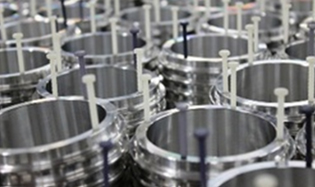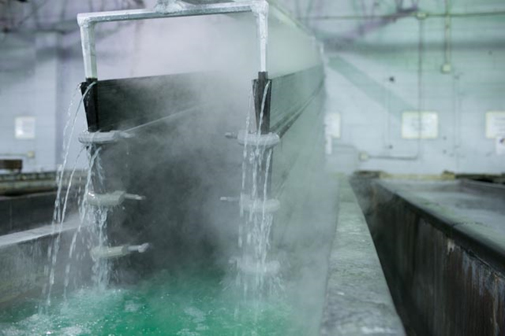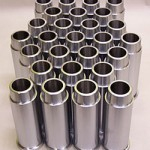Passivation

Passivation is a chemical treatment on metallic surfaces for cleaning and added corrosion protection. The purpose of passivation is for the removal of “free iron” and other exogenous foreign material from a metallic surface. During passivation a thin transparent oxide layer is formed on the metallic surface. This oxide layer is a protective surface film that is chemically inert and self-repairing when scratched. “Free iron” contaminants which are not removed from the part can inhibit the formation of an oxide layer, thus creating a potential corrosion site.
If these sites were uncommon on the surface, then the chance for corrosion would be minimal. But, the machining and fabricating processes cannot prevent these sites from covering the surface of the part, allowing the part to corrode prematurely. Mechanical removal of the “free iron” is not practical because of part deformation and the sheer complexity of some parts. The non-mechanical passivation process is perfect as the final step in creating stainless steel parts that are free from corrosion sites and truly stainless. However other metals can be passivated either by chemical treatments or other means.

Specifications and Requirements
 Glass Bead Blasting
Glass Bead Blasting
Nitric, Dichromate Seal
Specs
- ASTM A 380
- QQ-P-35
- ASTM A967
- ASM 2700
- Type II
